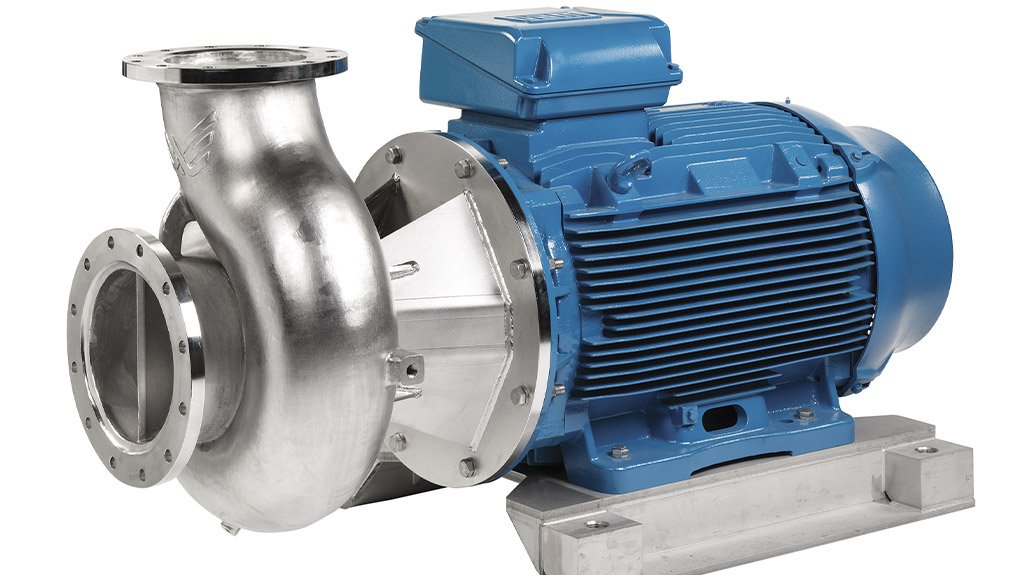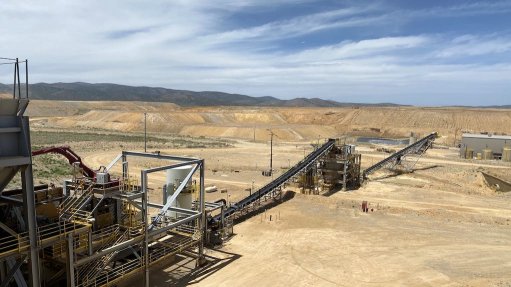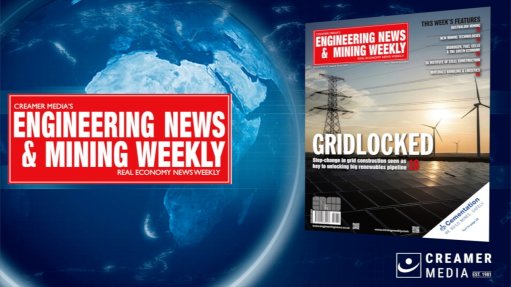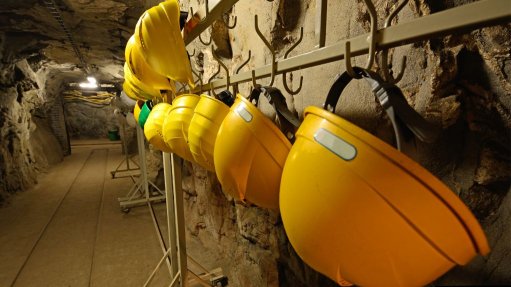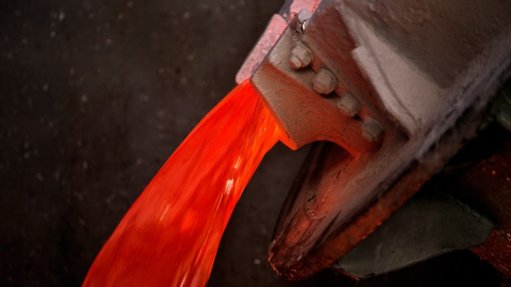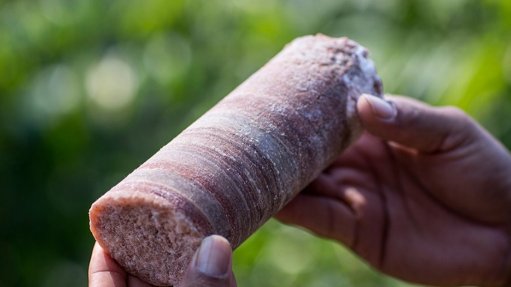Are you selecting the right pump materials for acid mine water?
This article has been supplied.
Darryl Macdougall, Managing Director, Verder Pumps South Africa
Acid mine water occurs when water reacts with pyrite – what we commonly know as ‘fool’s gold’ – in mining cavities beneath the Earth’s surface and in instances in coal processing plants where the pyrite is liberated in the washing process. The water becomes acidic and rich in iron, lead and other heavy metals – a combination that is toxic to living organisms. If untreated, this water joins the ground water system, sterilises the soil, and eventually flows into streams and rivers where it could join the drinking water supply system.
How does acid mine water occur in the coal fields?
South African coal occurs in layers within sedimentary rocks of the Karoo Supergroup. These are widespread, and the coal is extracted either by underground mining or by opencast methods. Coal mining results in very little surface dumping compared to gold mining, for example, as the coal is removed from the site. Though pyrite is contained in both the coal itself and the host rock, it is generally more plentiful in the coal layers.
Both underground and opencast mines produce acid mine water, though in different ways. In underground mining, the collapse of the overlying rock strata during mining operations, and once mining terminates, fills the cavities in the fractured rock with water. Decanting then occurs from the lowest opening. The water becomes acidic because it reacts with pyrite in unmined coal and in the host rocks.
Opencast mining, on the other hand, involves blasting and removal of the rocks overlying the coal layer. The fragmented cover rock is then replaced, or backfilled, and covered with soil. The terrain is then or 'rehabilitated' through landscaping, but rainwater still becomes acidified as it passes through the soil into the backfill, where it comes into contact with pyrite in the backfill material. It ultimately decants on the surface, usually a decade or more after mining ceases*.
Understanding that there is an impact on the environment and human lives, mining companies shoulder the responsibility of treating acid mine water with their own treatment plants. They have to deal with water with ph.’s as low as 2, knowing that conventional equipment used to pump clear water is not suitable to transport the acid water.
Traditionally, cast iron pumps have widely been installed for transporting wastewater to and within the treatment plant. However, this is not fit for purpose in acid mine water applications as the cast iron is corroded rapidly in the low ph. environment.
Cast iron is commonly used to manufacture pump housings because of its low cost and the ease with which parts can be cast and machined. When used in applications with water or aqueous solutions that have pH values between 6 and 10, cast iron – which contains about 4% carbon – quickly acquires a protective graphite layer. But in acid mine water (ph.2) applications the cast iron is corroded rapidly in the low ph. environment. Installing pumps which have been manufactured with a non-compatible material of construction could lead to high consumption of power and premature wear or failure of components in the system. This is not isolated to the pump itself but applies to instrumentation, piping, valves and ancillary equipment as well. Possibly the worst-case scenario is a catastrophic failure, resulting in leakage and subsequent environmental contamination issues.
The stainless steel solution
Knowing that acid mine water is highly corrosive and abrasive, acid mine water applications require pumps that are robust and designed to handle corrosive fluids. The pumps must also be easy to maintain and relatively low in cost to operate. For example, 316L stainless steel and duplex stainless steel centrifugal pumps perform better in many ways, due to the unique yet simple design and corrosion resistance of the stainless steel.
Stainless steel contains a significant proportion of chromium (at least 15%), which forms a thin, inert oxide layer on the surface. Unlike iron oxide, this binds strongly to the metal surface and therefore protects the underlying metal in environments that would be highly corrosive for cast iron or carbon steel. Other elements such as nickel, manganese and molybdenum may also be added to stainless steel to further enhance corrosion resistance. Under the right conditions, the protective oxide layer is self-repairing if it is scratched or damaged. This contributes to an improved pump efficiency, lower energy cost and less wear over time, making such pumps easy and cost effective to maintain, while supporting plant-process optimisation. This makes them 100% fit-for-purpose for the application.
Without appropriate acid mine water treatment and reuse, continued sustainable development will not be possible. We applaud the existing efforts of mining companies, Government, municipalities, and private sector players in this space, and encourage them to seek out solutions that aptly support their endeavours to spare every possible drop. Solutions that can eliminate downtime and maintenance costs, use less space and power, reduce waste or pollutant leakages, as well as risk, while also reducing capital investment will also increase overall project return-on-investment. These are the types of solutions that are worth investing in, don’t you think?
References
* The impact of acid mine drainage in South Africa, Terence S. McCarthy, School of Geosciences, University of the Witwatersrand, Johannesburg, South Africa
Address: 197 Flaming Rock Ave Northlands Business Park, Newmarket Rd, Northriding, Randburg, 2162
Phone: 011 704 7500
Website: www.verder.co.za
LinkedIn: Verder Pumps SA
Comments
Announcements
What's On
Subscribe to improve your user experience...
Option 1 (equivalent of R125 a month):
Receive a weekly copy of Creamer Media's Engineering News & Mining Weekly magazine
(print copy for those in South Africa and e-magazine for those outside of South Africa)
Receive daily email newsletters
Access to full search results
Access archive of magazine back copies
Access to Projects in Progress
Access to ONE Research Report of your choice in PDF format
Option 2 (equivalent of R375 a month):
All benefits from Option 1
PLUS
Access to Creamer Media's Research Channel Africa for ALL Research Reports, in PDF format, on various industrial and mining sectors
including Electricity; Water; Energy Transition; Hydrogen; Roads, Rail and Ports; Coal; Gold; Platinum; Battery Metals; etc.
Already a subscriber?
Forgotten your password?
Receive weekly copy of Creamer Media's Engineering News & Mining Weekly magazine (print copy for those in South Africa and e-magazine for those outside of South Africa)
➕
Recieve daily email newsletters
➕
Access to full search results
➕
Access archive of magazine back copies
➕
Access to Projects in Progress
➕
Access to ONE Research Report of your choice in PDF format
RESEARCH CHANNEL AFRICA
R4500 (equivalent of R375 a month)
SUBSCRIBEAll benefits from Option 1
➕
Access to Creamer Media's Research Channel Africa for ALL Research Reports on various industrial and mining sectors, in PDF format, including on:
Electricity
➕
Water
➕
Energy Transition
➕
Hydrogen
➕
Roads, Rail and Ports
➕
Coal
➕
Gold
➕
Platinum
➕
Battery Metals
➕
etc.
Receive all benefits from Option 1 or Option 2 delivered to numerous people at your company
➕
Multiple User names and Passwords for simultaneous log-ins
➕
Intranet integration access to all in your organisation



